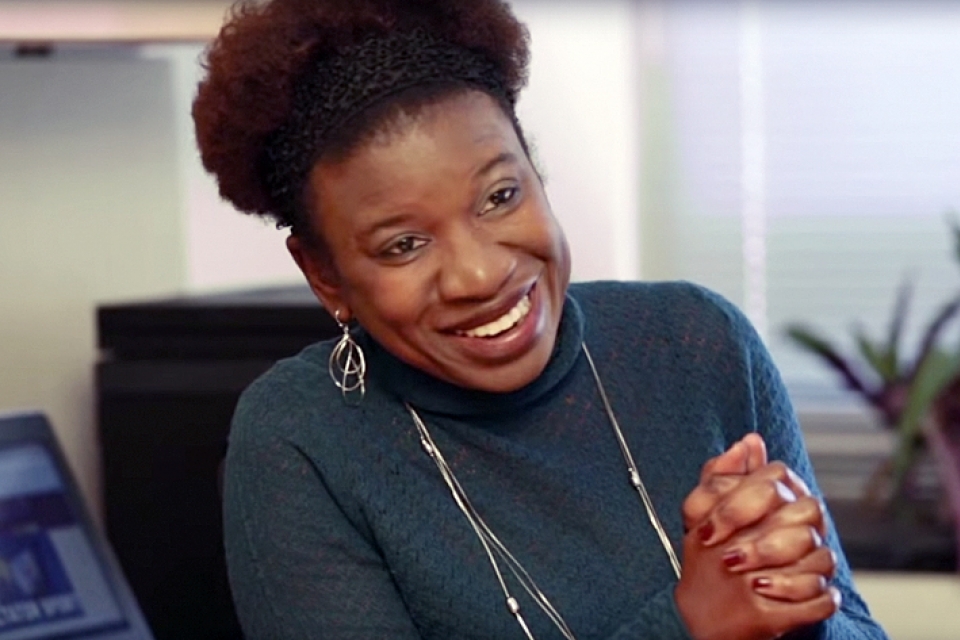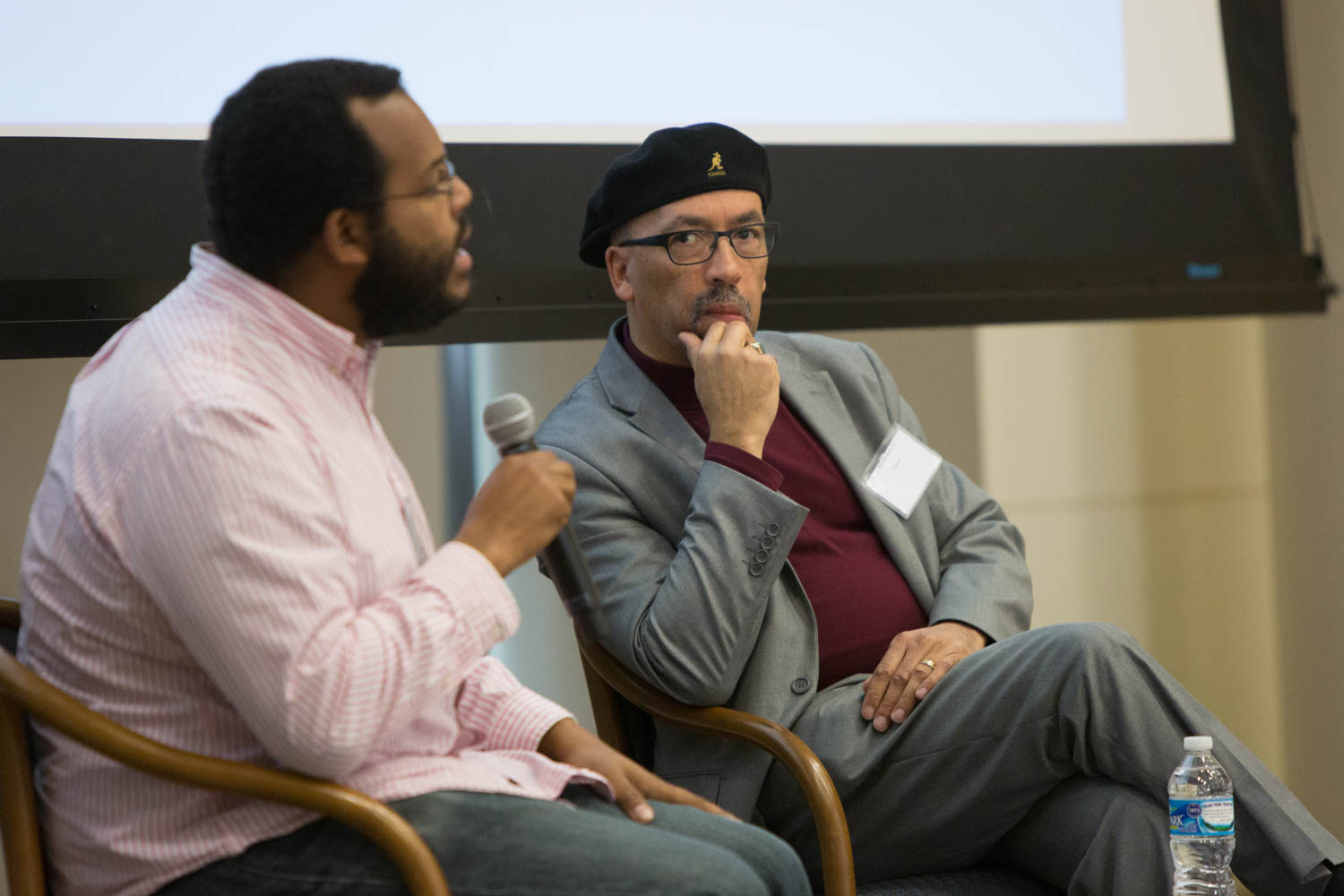By Briahnna Brown
The U Street Corridor in Northwest D.C. looks vastly different today from the way Vanessa Perry remembers it when she went to high school in the area.
The George Washington University School of Business marketing professor and chair of the Department of Marketing, explained that the nightlife scene in the U Street neighborhood is bustling now because of the dramatic change in the area’s demographics in recent years from gentrification—when higher-income residents move into lower-income neighborhoods and influence change in the area’s resources and cost of living that often causes the lower-income residents to move away.
Dr. Perry said that the idea for the study, published in the spring in the Journal of Public Policy & Marketing, came after researching for her award-winning documentary Dog Parks and Coffee Shops: Diversity Seeking in Changing Neighborhoods. Dr. Perry, and her co-author, Sonya Grier, a marketing professor at American University, decided to publish their research to encourage discussion on the implications of gentrification on consumption opportunities for the mixed demographics of these changing neighborhoods.
She explained some of her findings and what new perspectives she learned through interviewing both long-time D.C. residents and diversity-seeking newcomers with GW Today:
Q: Was there anything you were surprised to find or to learn?
A: There were lots of discussions about characteristics of the neighborhood that draw people that really don't have anything to do with existing residents but also don't presume the residents are going anywhere. That was surprising, somewhat pleasantly surprising, because we learned that's not necessarily what people want. They [new residents] are not trying to take over, at least we didn't get the sense they wanted to take over. As a matter of fact, they wanted to be part of a community or currently felt like they were part of a community.
The other surprising thing: Everyone talks about feeling a sense of community and feeling at home and feeling connected to their neighbors and to the neighborhood in very much the same kind of terms, regardless of how long they've been there. That was also somewhat surprising because in other research that's been done on gentrification and its effects tends to focus on the tension that occurs. Although we heard quite a bit of that, it was sort of just an ambivalence--there were tensions and there was a very strong willingness or interest in being a part of a diverse community.
Q: What were some of the biggest differences in responses between longer-term residents and newer residents with regard to consumption opportunities and social interaction?
A: One of the differences is in what people value. The older residents tended to talk about the kinds of goods and services, and what we described as consumption opportunities, that were available to them before the newcomers arrived. They were very different, and in many ways, they were inferior. There weren’t a lot of grocery stores, there weren't a lot of restaurants, there wasn't a range of different kinds of products and services either.
They talked a lot about the fact that what they've become accustomed to is no longer available, yet there's all these other new products, services and consumption opportunities available.
They talked about how expensive everything is—it’s the longer-term residents that talk about the expense versus the newer residents, who acknowledged that it's an expensive area, but also what made these neighborhoods attractive areas to live for people with higher incomes is that there are services and amenities that they're accustomed to.
Q: What is “faux diversity?” Why is it significant in the discussion of gentrification and consumer habits?
A: Faux diversity is a concept that we introduced because this theme came up in many of our interviews. It’s what occurs when people are in close proximity; they may interact with each other on a transactional basis, but do not have any deeper level of social interaction. Under true diversity, you would have both diversity and inclusion.
If there were inclusion, there would a place for everyone and access provided to everyone for a variety of goods, services and opportunities. What we describe as faux diversity is really a perverse kind of outcome of diversity-seeking, in that people end up seeking diversity in a superficial way, but not in any kind of substantive or long-term kind of way.
Q: Can you explain how longer-term residents perceived being “de-targeted,” and how, through this process, marketers may perpetuate faux diversity?
A: De-targeting is the process by which marketers, who at one point targeted a particular market with products, services and experiences tailored to them, no longer target those people or provide those same products, services or experiences. They do this so they can switch target markets and tailor their products, services and experiences to another segment looking for different value propositions, different benefits and different products altogether. Plenty of the longer-term residents we talked to described their experiences in a way that sounds like de-targeting.
It is clear this is done strategically, I'm just not sure that marketers intend to leave money on the table. The implication is, “OK, I'm no longer going to target this particular group. Instead I'm going to go after this group I perceive as being perhaps more lucrative.” But that doesn't always make sense [that they would leave money on the table].
If there is a viable and profitable opportunity to provide goods and services to a target market that is viable, marketers will find that opportunity and ultimately serve that market as well. There really shouldn't be a gap to the extent that you have different groups of people in the same neighborhood, all of whom can afford certain products and services. They may not be able to afford the same ones, but they're still going to beauty salons, they're still buying groceries, they're still going out to eat.
There should be something available for everyone, and the perception among some of the long-standing residents is the products and services that had been available to them are no longer available in that neighborhood, which causes people to have to travel farther and ultimately might lead people to leave the area to move away.
Learn more about the documentary and upcoming screenings on the film’s Facebook page.




